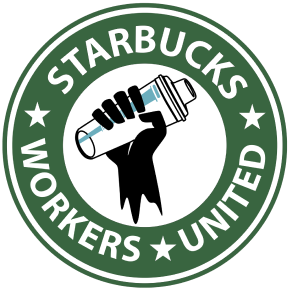From hospital corridors to Hollywood writers’ rooms, and from warehouses to airport runways, collective bargaining is making a comeback. And while the term “collective bargaining” may sound old-fashioned, it captures an age-old approach to labor organizing that anyone can use to improve their workplace, wages, and more. Here’s what to know about collective bargaining and how it can shift the power balance from the boss, who usually holds all the cards, to the workers.
What is collective bargaining?
Collective bargaining is “a process through which workers join with other workers to try and influence their wages and other employment conditions” through negotiations with their employer, explains Harry C. Katz, professor at Cornell University and co-author of “An Introduction to U.S. Collective Bargaining and Labor Relations.” This process relies on workers coming together to pressure their employer as a group because, as we all know, there’s power in numbers. “They often exercise power by threatening to strike, or they sometimes try to exert more informal collective influence, or they turn to political action,” says Katz.
The goal of collective bargaining is to reach an agreement on employment terms and enshrine those terms in a contract. Whether you want higher wages, more control over your schedule, or a better process for handling discipline at work, collective bargaining can empower you to push for the changes you want to see. Learn more about how collective bargaining works.
What can collective bargaining do for workers?
It’s important to remember that collective bargaining is a civil right protected under U.S. law. Here are just a few ways collective bargaining can benefit employees at companies of any size.
1. Collective bargaining can improve wages and working conditions.
Collective bargaining consistently leads to a better deal for workers. Studies show that unionized workplaces (i.e., those with collective bargaining agreements in place) enjoy better wages and benefits, though the degree of improvement understandably varies based on industry and occupation. Among full-time workers, union members earned 18% more per week on average than non-union workers in 2022, according to the U.S. Bureau of Labor Statistics. That’s a massive wage bump for unionized workers!
People in unions are also 18% more likely to receive employer-sponsored health insurance, according to a recent report released by Congress. By one estimate, American workers are missing out on approximately $200 billion each year in pay and benefits that they could have had under collectively bargained union contracts.
As a recent example, in July 2023, United Airlines reached a preliminary deal with its pilots’ union to raise wages by up to 40% over the next four years after pilots threatened to strike. American Airlines followed suit by offering their workforce a 40% wage bump, too.
2. Collective bargaining gives workers a voice.
Collective bargaining is about more than securing better wages; it’s also about workers having more power in general, and therefore having more influence over how and when they work. When workers speak up with one voice, they can get the boss to sit up and listen.
This voice can be life-changing for workers, says Katz. “There are other types of ‘voice’ that are really critical in the workplace, [such as] influencing discipline and how it’s administered, influencing how work is organized, the pace of work, the process of work, [and] the power that supervisors exert on workers.”
In the U.S., workers can influence discipline and work conditions through something called the grievance procedure. This is a process by which a worker can bring a complaint to their employer if they believe that a policy in their contract has been violated. The employer can then hold meetings with the worker and their union representative to resolve the issue. The grievance procedure creates a process for resolving disputes in the workplace and giving employees due process, and it’s commonly negotiated in collective bargaining agreements.
Collective bargaining can do more than increase wages and benefits; it can also improve the overall culture of the workplace.
As one example, in July 2023, UPS workers represented by the Teamsters successfully struck a deal that not only increased wages, but also improved their quality of life in what Teamsters President Sean O’Brien called “the best contract in the history of UPS.” It includes provisions that ensure UPS vans are air-conditioned and that workers aren’t forced to work overtime during their scheduled days off.
3. Collective bargaining helps solve day-to-day problems in the workplace.
Employees often know better than management what’s going on at work, and they have good ideas for solving problems.
“Management often thinks it knows best,” says Katz. “By birthright, they understand how to do things and make things more productive and efficient. … But they don’t always understand how to address issues at the workplace.”
A union is a vehicle for bringing together workers and management, so they can leverage their combined knowledge to tackle thorny problems and help the business run better. “[A union] provides a means for collective expression and airing of the insights that workers often have about how operations can be improved,” says Katz.
Here’s just one example: Improving patient safety has been central to the nurses’ strikes unfolding across the U.S. in recent years, with nurses citing deep concerns about their ability to adequately care for patients when hospitals are chronically understaffed. For so many healthcare workers, their fight is about improving their ability to do their jobs and improving health outcomes for the general public.
4. Collective bargaining holds employers accountable.
When employees have a collective bargaining agreement in place, they have a document that clearly defines what workers are owed, how the workplace operates, and how the company will resolve disputes when they invariably arise. Transparency is the first step towards holding employers accountable to keeping their promises. If a policy gets violated, workers have recourse to address the issue. And when that contract expires, they can negotiate a new one that reflects changing workplace concerns (like safety issues) and economic conditions (like inflation or higher cost of living).
Collective bargaining is the first step towards a fair and just contract that responds to workplace concerns and gives hardworking employees their due.
In conclusion, collective bargaining is catching fire in the U.S. right now — and the flames are only getting hotter. More Americans approve of unions than at any time since 1965, with 71% expressing support. And in 2022 alone, workers won 72% of union elections — an 11% increase over the previous year. Forming a union is the first step to reaching a collective bargaining agreement, which can take years and involve many setbacks. But if the victories listed above are any indication, the struggle is nearly always worthwhile.
Ready to bring collective bargaining to your workplace? Speak with an organizer for help getting started.
Image note: “Nurses strike for patient care against hedge fund” by joepiette2 is licensed under CC BY-NC 2.0.




